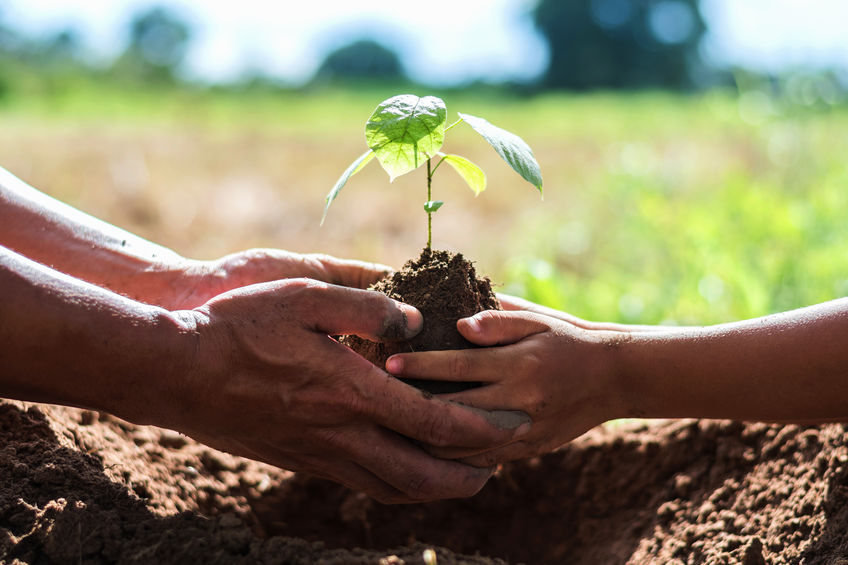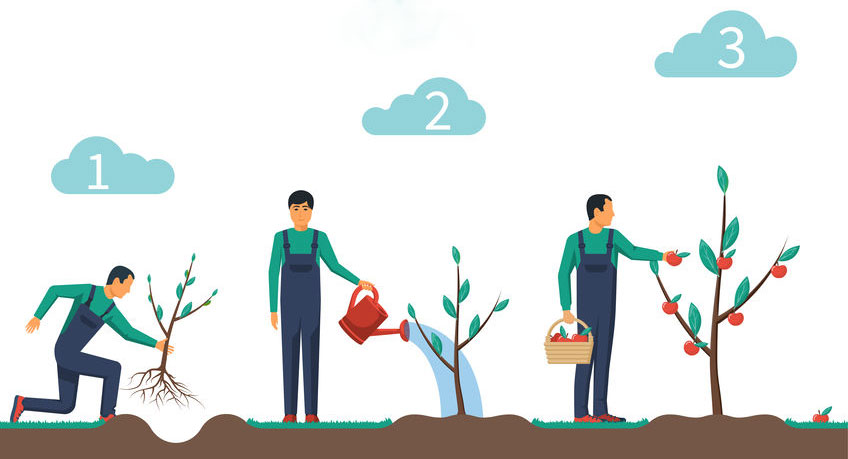There are so many benefits to planting a tree, whether you’re doing it on public property or your own backyard. But, planting a tree is a dedicated practice that you’ll be invested in for life! Most people think it takes hundreds of years to see the fruits of your labor when it comes to a tree, but that isn’t necessarily true.
It all depends on where you live, the season you’re planting, and the type of tree you use. Of course, how your tree grows also depends on the care you give it after planting.
So, how can you make sure your new tree gets off to a strong and healthy start. How can you continue to nourish it for years to come so you can see it grow and flourish?
When to Plant a Tree?

First, it’s important to understand the right time to plant. When people think about planting vegetables and flowers, Spring is usually the first season that comes to mind. But, that isn’t necessarily the best season for planting when it comes to trees.
The best time to plant is typically in the dormant season when the leaves have already fallen from the trees. Ideally, you’ll want to plant before the ground freezes in order to make things easier on yourself. You can also choose to plant in very early spring before any buds begin to show up on the branches.
Read also: Plants That Repel Flies, Mosquitoes and Bugs
What’s the point of planting a tree in the dormant season? It gives the roots a chance to grow and establish themselves in that location before warmer weather and rainier seasons hit. So, the roots will already have established their home within the ground and can use the Spring rain to stimulate even more growth.
Keep in mind that depending on the climate you live in, you may be able to successfully plant a tree any time. Even if you choose to plant in the Spring or Summer, if you take proper care of the tree, it can thrive.
How to Plant a Tree?

Not sure where to get started when it comes to planting a tree? It’s easier than you might think! Let’s go over a step-by-step guide you can use to break down the process and make sure you’re planting safely and effectively.
Step 1.
Locate any underground wires before digging. Also, pay attention to any above-ground wires like power lines. Your tree may be small now, but if it grows into those lines it could cause major problems.
Step 2.
Dig a shallow but broad hole, two or three times wider than the root ball.
Step 3.
Remove the tree from the container/wire basket.
Step 4.
Don’t plant too deeply. The tree should be planted just above the root ball. If you plant it too deep, the roots won’t get the oxygen they need to grow.
Step 5.
Make sure the tree is straight and evenly planted before filling in the dirt.
Step 6.
Pack the soil firmly around the hall to avoid air pockets, but be gentle as you do.
Step 7.
Stake the tree for a stronger root system.
Step 8.
Spread mulch around the base of the tree to encourage more moisture.
Step 9.
Provide continuous care as your tree starts to grow.
While this might sound like a lot of steps, you can get a tree lanted relatively quickly when you know what you’re doing. The bigger challenge comes from the last step; taking care of the tree for years to come in order to make sure it grows properly.
How Do You Grow a Tree?
So, what should that follow-up care consist of? How do you actually grow a tree once you’ve planted it in the ground?
Thankfully, it isn’t difficult to properly maintain your tree. Some of the easiest and most effective things to do are to make sure the soil surrounding the area is consistently moist, but not water-logged. You can usually achieve that by watering the tree once a week (if it doesn’t rain). If you live in an especially hot or dry climate, you may need to water more frequently.
Read also: Benefits Of Planting Trees
Though we briefly touched on mulch above, it’s an important step not to miss, especially if you’ve already planted your tree and it doesn’t seem to be growing as readily as you would like. Spreading organic mulch around the tree can help to keep away weeds or grasses that will compete for nutrients in the soil. As a result, the tree will be getting all of the moisture and nutrients it needs.
Different Trees, Different Seasons
Where you live and what season it is may have a large impact on which type of tree you should plant. One of the best things you can do is to choose an all-season tree that will brighten up your yard all year long. Some of the best all-season trees include:
- Red Dogwood
- Crabapple
- Sourwood
- Cranberry Viburnum
- Japanese Maple
- River Birch
As you can see, it doesn’t have to be difficult to plant a tree. In fact, when you have a plan ahead of time and you know what you’re doing, you can get a tree in the ground in less than an hour. As long as you maintain proper care, you’ll enjoy the benefits of watching it grow over time. Eventually, you will be able to enjoy it even more – especially if it has flowers or changing leaves that you can appreciate when the seasons shift.
If you’ve always wanted to plant a tree but you’ve never tried it before, it’s easier than you might think! Plus, you’ll add everything from curb appeal to your yard, to more shade, and even better airflow. Make sure you’re safe when you decide to plant and choose a location that makes sense for the overall health and development of the tree.
By keeping these tips in mind and knowing the steps requited to plant, you can create an entire forest in your own yard, and take comfort in the fact that it can be enjoyed for hundreds of years.


